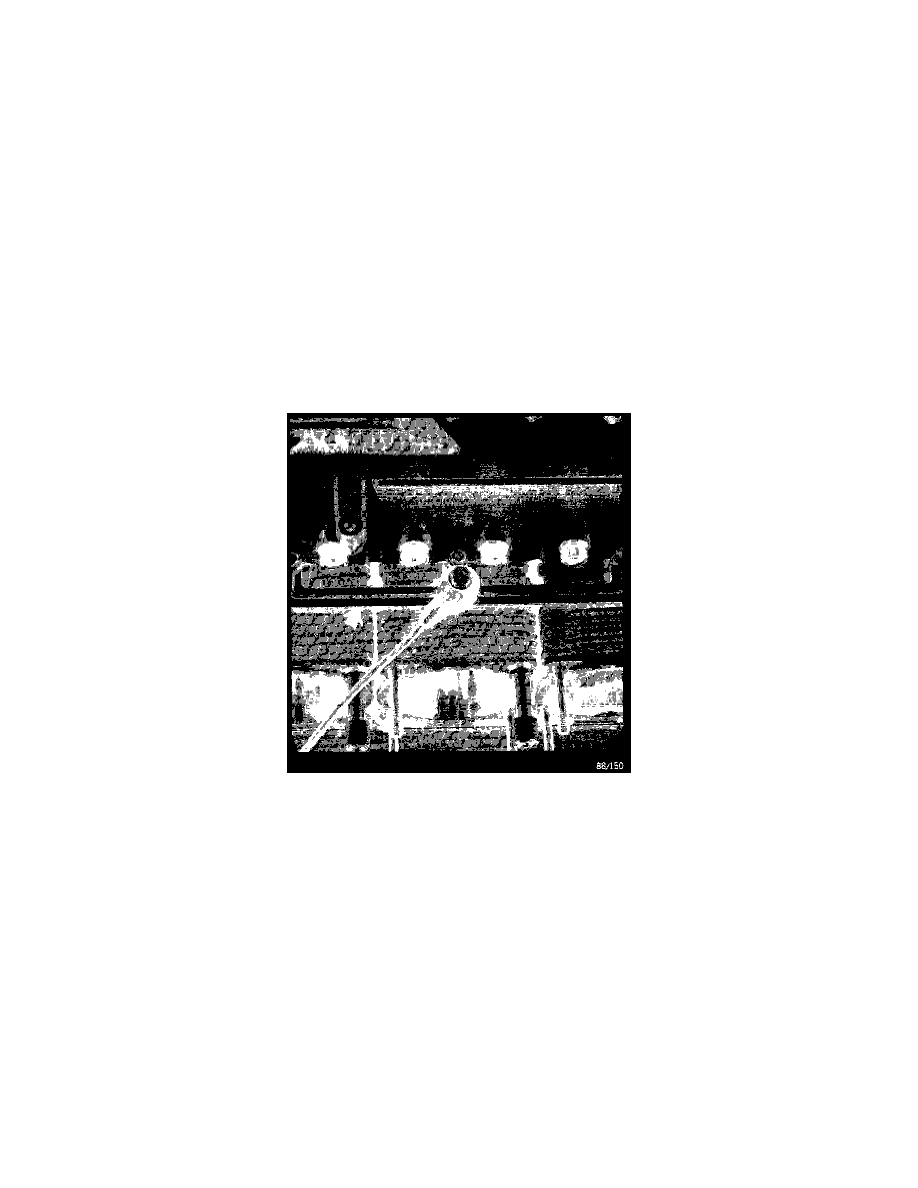911 Turbo AWD F6-3600cc 3.6L SOHC Twin Turbo (1997)

Knock Sensor: Description and Operation
ADAPTIVE KNOCK REGULATION
Knocking combustion can lead to engine damage. For this reason the engine is fitted with a knock regulator that individually retards ignition timing
within each cylinder when uncontrolled combustion occurs in the form of knocking.
Basic Features
The engine is equipped with two knock bridges with a knock sensor screwed into each of those knock bridges. The knock bridges connect the
individual cylinders no. 1 to 3 and 4 to 6. The knock detection circuit is matched to the bridges which is why no other components may be filled to
the bridges (interference). As is the case with all knock sensors, the correct tightening torque and the correct assembly sequence must be observed.
Inadvertent mix-up of the connectors of the knock sensors on the wire harness end cannot occur. The plug connector is of green color.
If a knocking combustion is detected, the ignition timing for the respective cylinder is retarded by 3°.
If the knocking combustion continues, each knock sensor retards the ignition in 3 stages up to a maximum of 9°.
If no knocking combustion is detected anymore, the ignition timing is advanced to the optimum value or the programmed ignition timing angle
again in small steps according to the time elapsed.
To allow the sensor signals of both knock sensors to be correlated according to the firing order, a Hall sender is fitted into the double ignition
distributor to enable the DME control unit to recognize the ignition point of cylinder no. 1.
Knock sensor bridge with knock sensor for cylinders no. 1...3
In order to perform adaptive knock regulation, the electronic ignition map is subdivided up into 8 engine speed and 4 load ranges. If a knock
occurs, the ignition angle is retarded by 3 for the respective cylinder, and is then retuned to the optimized ignition angle in small steps dependent
on time. If, however, the corresponding load/engine speed range is exceeded (e.g. during acceleration) while ignition timing is retarded, the last
ignition timing angle set (learned) when the load/engine speed range was left is now adapted. In the next load/ engine speed range, the new
(optimized) ignition angle stored in the control unit is immediately set. In this manner, longer and unnecessary retarding of the ignition is avoided
and the dynamic behavior of the engine is improved.
If the engine now returns to the load/engine speed range with the adapted (learned) ignition angle, the reduced value deviating from the optimum
ignition angle is set first. This helps to reduce the total number of knocks.
